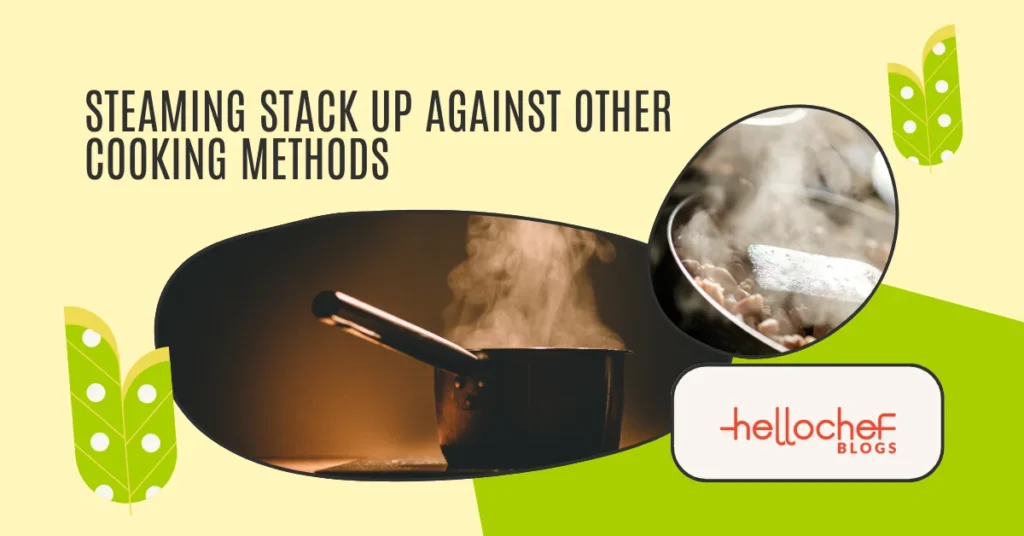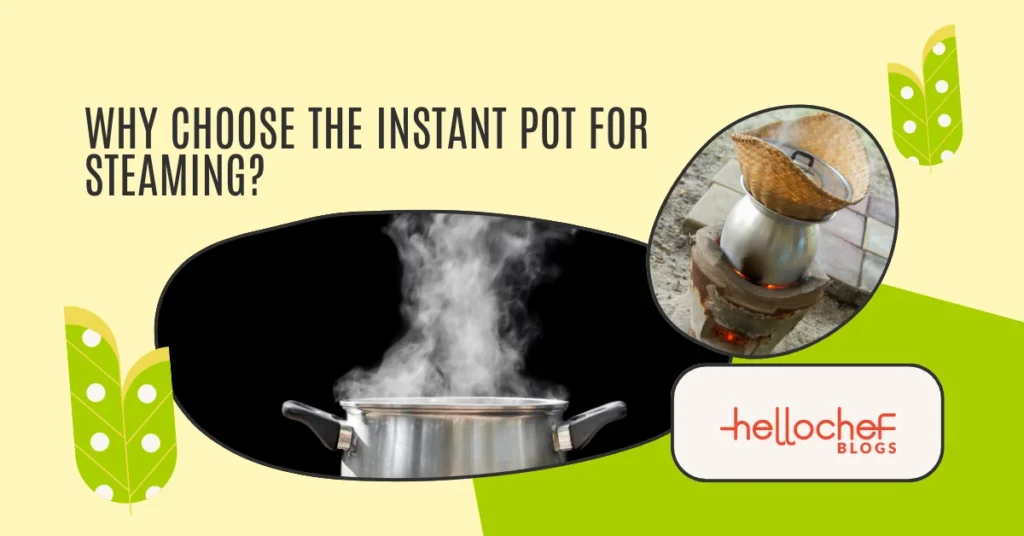Best Way to Steam Vegetables: A Comprehensive Guide
Gentle steaming is healthy and simple, keeping the important nutrients intact whilst providing divinely tender results! Using a steamer, the microwave, or an instant pot you will know exactly how to steam vegetables in this guide — regardless of whether your chef cook experience level is advanced or amateur. When it comes to the end of this post, you will steam vegetables like a pro without any chance for mush or sad grey-looking veggies!

Why You Should Learn How to Steam Vegetables
Not only is steaming quick and efficient, but it helps to retain the nutrients and vitamins that are often lost through other cooking methods such as boiling. Perfectly cooked but still slightly crisp, super healthy, and full of flavor, perfect for serving as a veggie side to any meal. Moreover, there is the advantage that it can be prepared with very little kitchen equipment which makes this method universal.
What is steaming and why it matters?
A light way of cooking that avoids submerging the vegetables in water, steaming lets you cook your greens using steam from boiling pan/wok. This preserves the vitamins and minerals that are often lost when vegetables are boiled. It not only boosts the nutritional aspects of your vegetables like broccoli and carrots but even keeps their color intact as well as their creamy taste.

Does Steaming Stack Up Against Other Cooking Methods?
Steaming is great because it maintains the integrity of your veggies much better than boiling, sautéing, or roasting. Boiling certain vegetables, for example, chewy texture and will pull the nutrients from the vegetable into your water. Whereas steaming is a softer technique producing the vegetables nice and soft you so hard avoid over mere cooking them as well. Thus, would you like to eat crunchy and smoky broccoli or cauliflower? If your answer is yes then the steaming technique calls for!
How to Steam Vegetables with a Steamer Basket
The steam basket method is the second favorite way to steam veggies. The brass grill fits into a pot or saucepan with boiling water and lets the vegetables cook over it without actually touching the water.
How to Steam in a Steamer Basket (Step-by-Step Guide)
Add water to the pot: Add 1 inch of water at the bottom of a large stockpot and bring it to a boil.
Put the veggies into a steamer basket: drop in your carrots, broccoli, or cauliflower. Ensure the water does not touch the vegetables.
Add lid on top to steam the contents: Cover it with a lid, as this allows everything in the pot to cook. Steam vegetables for 5-10 minutes, depending on the veggie and desired tenderness.
Best Vegetables to Steam in a Steamer Basket
Some vegetables, such as leafy greens and dense root vegetables like carrots will steam especially well in the steamer basket. This technique ensures uniform cooking and maintain the vegetables soft but still a little crunchy. The best part? A batch of veggies can be steamed in less than 15 minutes, so great for a fast side dish.

Steaming Vegetables Without a Steamer
Don’t have a steamer basket? No worries! Steaming — You can steam with the use of everyday appliances like a microwave or saucepan to maintain healthful vitamins and minerals within vegetables. Step-by-Step How to Steam Vegetables without a steamer. We are going to cook your veggies using the Parboiling method, which is first partially boiling and then simmering in water.
How To Steam Vegetables in the Microwave
Get a microwave-safe bowl: Put your vegetables into the microwave-safe dish and add some water—about 1-2 tablespoons.
Cover the bowl: Set in a microwave-safe lid, plate, or plastic wrap with a steam vent cut but held back from it.
Steam: Steam the veggies for about 3-5 minutes in your microwave. Cook until done, then test again and repeat the process if needed. Great for fast-steaming, particularly those micro-loads to suit green beans or a handful of shredded cabbage.
How to Steam Vegetables Using a Saucepan and Lid
Boil water: Place 1 inch in a saucepan and bring to a boil.
Add the Vegetables: Place the veggies in a single layer above the parchment and make sure you do not submerge them into water.
Cover with a lid and steam: With the lid on, cook until vegetables are soft (but not super mushy) and you can keep checking with a spoon to see how they’re doing. This is a good technique to use when you have tougher vegetables like carrots and broccoli.
The Best Way to Steam Veggies is in an Instant Pot
You use an instant pot most easily and quickly to steam the vegetables. In only a few minutes, this handy kitchen gadget can steam your vegetables properly and is perfect for homes on the go.
Instant Pot Steaming: Step-by-Step Guide
Fill Instant Pot with water: Place 1 cup of water in your instant pot and add the steamer basket or trivet inside.
Put your veggies into the basket: Place your already-cut broccoli or cauliflower in the steaming basket so they do not touch water.
Set a timer and steam: Seal the lid and select the “steam” function. Depending on the vegetables, steam for 2-5 minutes on high pressure.

Why Choose the Instant Pot for Steaming?
We use an Instant Pot not only to speed up the process but also for evenly cooked tender veggies in every batch. In a matter of minutes, because it’s pressured cooked, even vegetables like carrots or cauliflower cook through and become soft. And you get a steam feature, which retains the crunchiness and vitamins of your greens without overcooking them.
Common Steaming Mistakes
Steaming might seem like a simple process, but there are some common mistakes that can result in under or overcooked veggies.
Overcooking Vegetables
Overcooking: This is one of the biggest mistakes. Cooking vegetables with steam too long and they lose their texture, becoming mushy and bland in color. That said, if you’re unsure then err on the side of undercooking; as when removed from the heat in residual will continue to cook and finish them.
Using Too Much Water
Only use a little water when steaming in a saucepan or with other methods like using an instant pot. No vegetables should be touching the boiling water because you basically want to steam, not fry them. You also do not want to overwater so you are looking for about 1 inch of water at the base.
Forgetting to Test for Doneness
Check your veggies for taste or use a fork to test whether they are fully cooked in the oven. The vegetables should be cooked through but tender to the bite.
Key Takeaways
- Steaming is one of the healthiest cooking methods, preserving nutrients while delivering tender veggies.
- A steamer basket is a simple tool that allows you to steam vegetables over boiling water without touching the water.
- You can steam vegetables without a steamer by using a microwave or saucepan.
- The Instant Pot offers a quick and easy way to steam vegetables to perfection.
- Avoid overcooking and using too much water to ensure your vegetables are tender and delicious every time.
- Regularly perform a taste test to check for doneness and prevent mushy veggies.
By mastering the art of steaming, you’ll enjoy healthy, flavorful vegetables as a nutritious side dish to any meal. Whether you’re using a steamer basket, microwave, or Instant Pot, steaming is an excellent method for preserving the crunch and vitamins in your favorite veggies.


